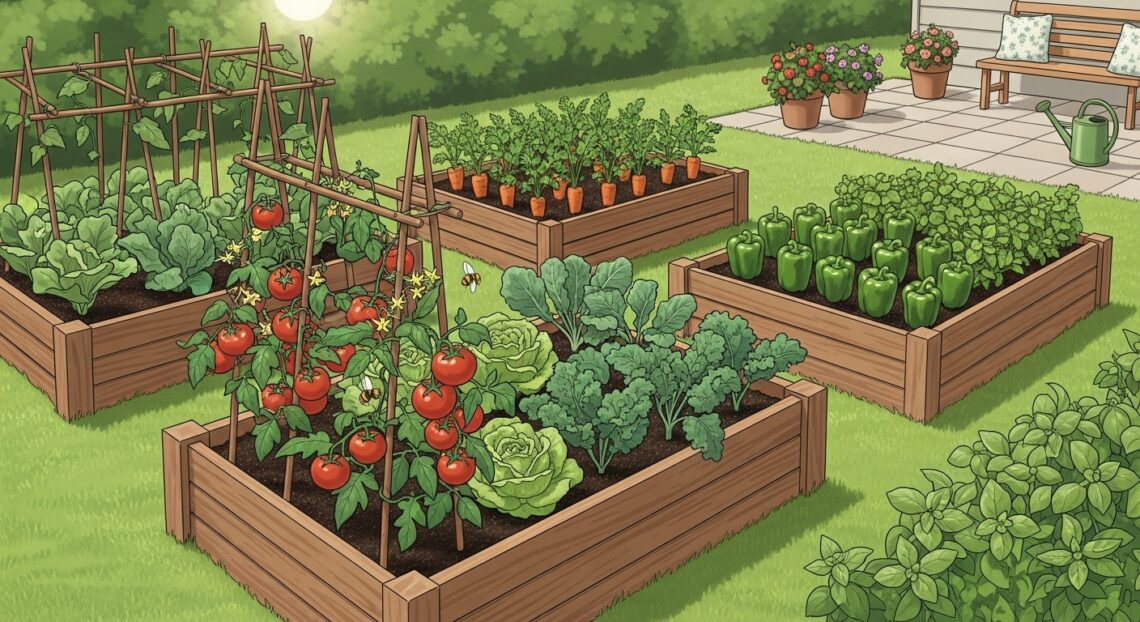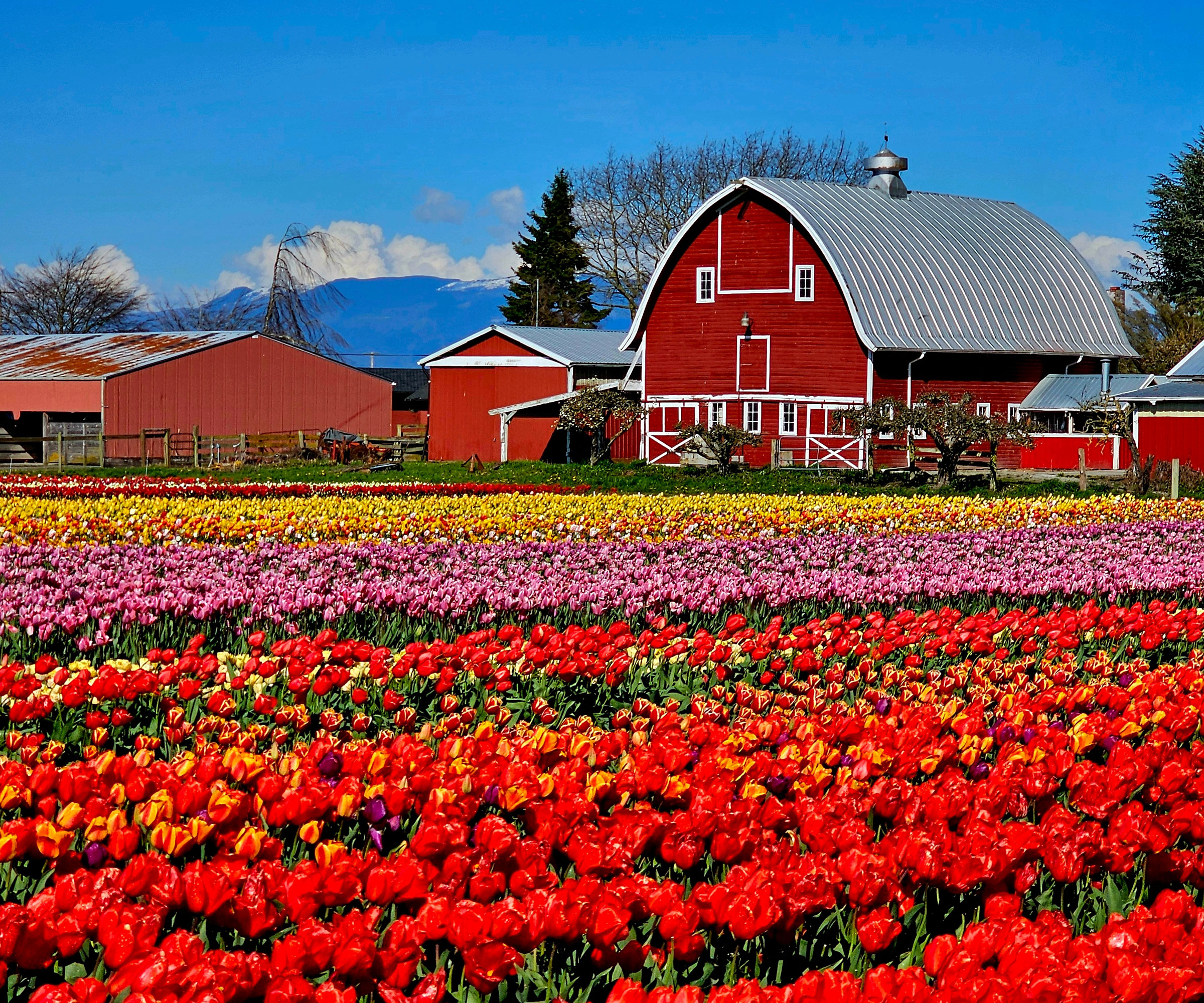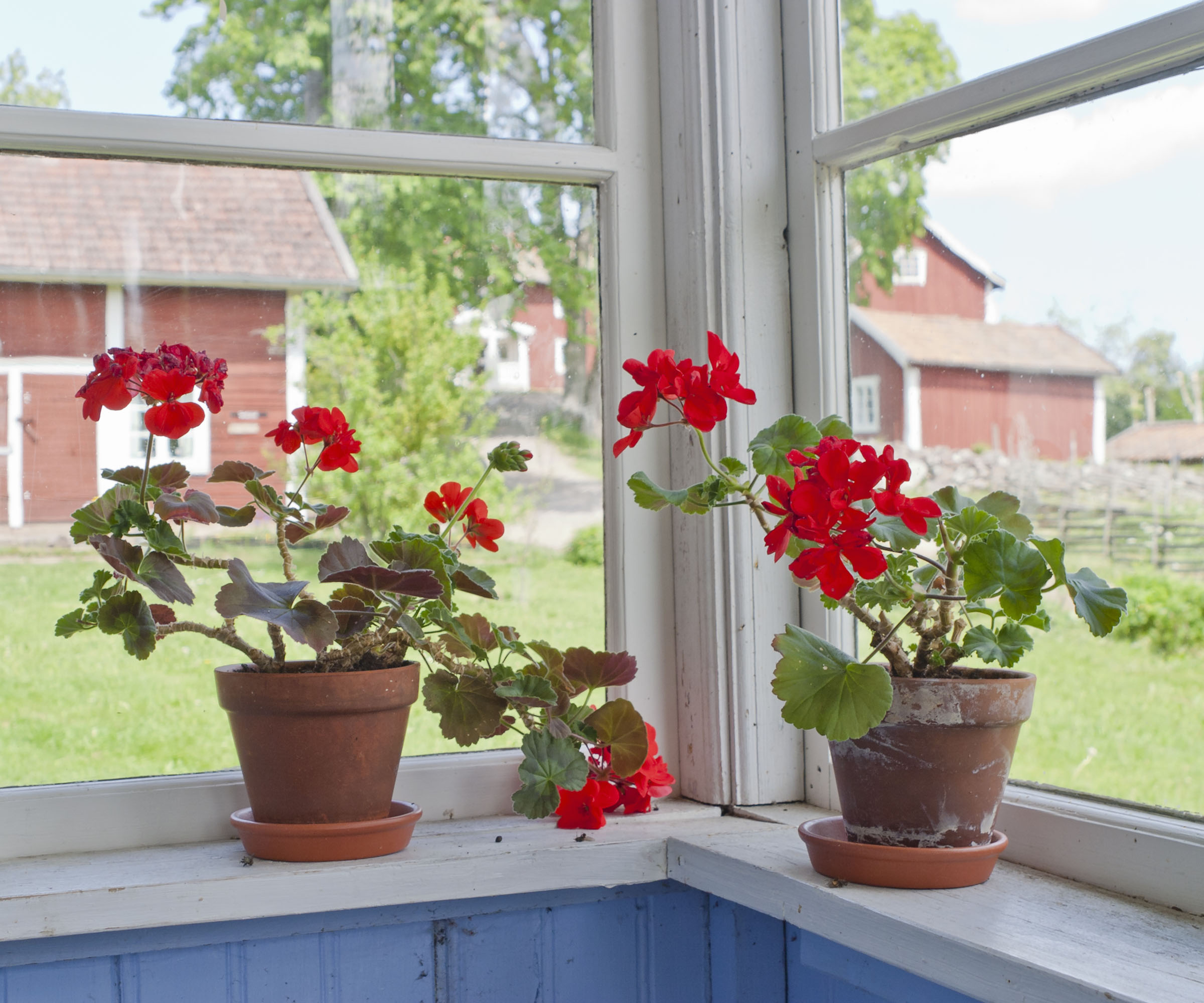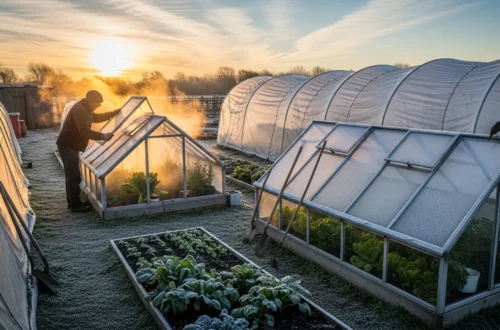Table of Contents
Introduction
If you’ve ever dreamed of walking out your back door and harvesting fresh vegetables for dinner, a raised bed garden might be the perfect place to start. Raised bed vegetable gardening has become increasingly popular among homeowners, DIY enthusiasts, and individuals seeking to grow food in a more organized and space-efficient manner.
Unlike traditional in-ground gardening, raised beds are simply soil-filled boxes (often wood, stone, or metal) that allow you to control growing conditions. They’re neat, accessible, and productive—even in small yards or patios. For people working with limited space, poor native soil, or mobility challenges, raised beds open a whole new world of possibilities.
👉 “Raised beds are one of the best ways to grow vegetables at home, especially if you have limited space. Before building one, make sure you use safe materials for raised beds.“
But here’s the exciting part: not every vegetable thrives in every situation, and some crops are much easier for beginners to manage in raised beds than others. In this article, we’ll break down the best vegetables for raised beds, explain why they thrive there, and give you practical growing tips so you can enjoy a successful harvest, even in your very first season.
Why Vegetables Thrive in Raised Beds
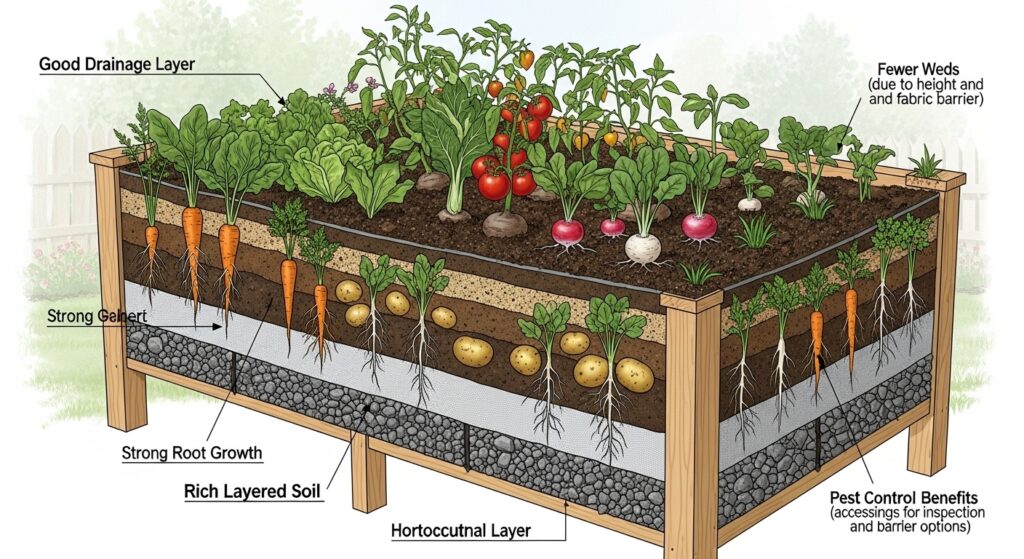
So why do vegetables seem to do better in raised beds compared to traditional garden rows? Let’s look at the main reasons:
1. Improved Soil Quality
One of the biggest advantages of raised beds is the ability to start fresh. Instead of struggling with heavy clay, rocky soil, or sandy patches, you can fill your raised bed with a rich blend of compost, topsoil, and organic matter. This ensures vegetables get the loose, nutrient-dense soil they love. Root crops like carrots and beets especially benefit from this improved soil texture.
2. Better Drainage
Raised beds naturally drain excess water more quickly than in-ground plots. This is essential for preventing root rot, especially in areas with heavy rainfall or poorly draining native soil. Vegetables such as onions, garlic, and lettuce thrive in these well-draining conditions.
👉 “Raised beds improve soil drainage and reduce compaction, which helps plants grow stronger.”
3. Easier Pest and Weed Control
Because raised beds are elevated, they’re less accessible to crawling pests and invasive weeds. With a little mulch and smart planting, you’ll spend far less time weeding compared to a traditional garden. Companion planting (like pairing tomatoes with basil) can also help repel insects naturally.
4. Accessibility and Comfort
Raised beds are easier on your back and knees. No more endless bending or kneeling—just comfortable, organized gardening. This makes vegetable gardening enjoyable and sustainable, especially for older gardeners or anyone with limited mobility.
List of Best Vegetables for Raised Beds
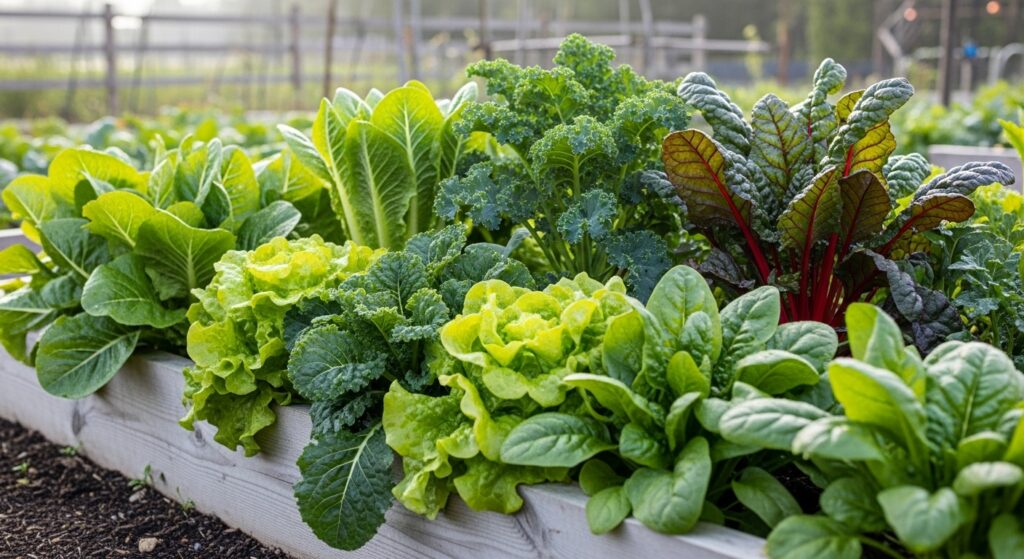
Now for the exciting part: what should you grow? Here’s a detailed breakdown of the best vegetables for raised beds, complete with tips for success.
Leafy Greens
Perfect for beginners, leafy greens grow quickly, don’t require much space, and can often be harvested multiple times.
- Lettuce
- Sunlight: 4–6 hours (prefers partial shade in hot climates)
- Water: Keep soil consistently moist
- Spacing: 6–8 inches apart
- Tip: Harvest outer leaves often to encourage continual growth.
- Spinach
- Sunlight: 4–6 hours
- Water: Regular, even moisture
- Spacing: 3–5 inches apart
- Tip: Grows best in cooler weather; plant in early spring or fall.
- Kale
- Sunlight: 6–8 hours
- Water: Moderate watering
- Spacing: 12–18 inches apart
- Tip: Cold-hardy; can survive light frosts, giving you greens deep into the season.
- Swiss Chard
- Sunlight: 6–8 hours
- Water: Moderate, but don’t let it dry out
- Spacing: 10–12 inches apart
- Tip: Harvest outer stalks; the plant will continue producing for months.
Root Crops
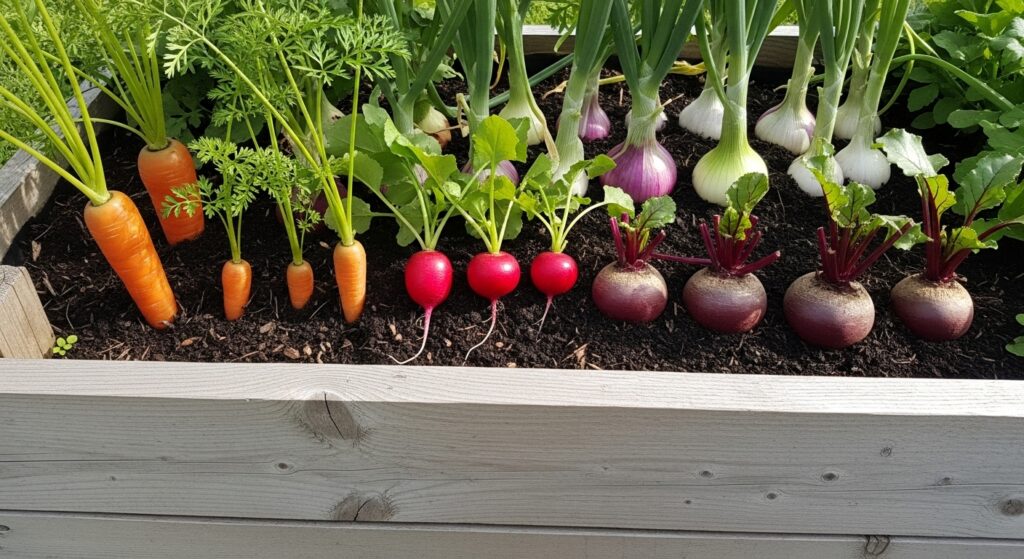
Raised beds provide the loose, rock-free soil root crops need to grow straight and healthy.
- Carrots
- Sunlight: 6–8 hours
- Water: Steady moisture for even growth
- Spacing: Thin seedlings to 2 inches apart
- Tip: Choose deep beds (at least 12 inches) for longer carrot varieties.
- Radishes
- Sunlight: 6–8 hours
- Water: Moderate
- Spacing: 2 inches apart
- Tip: Fast-growing—ready to harvest in just 3–4 weeks. Great for beginners.
- Beets
- Sunlight: 6–8 hours
- Water: Keep soil evenly moist
- Spacing: 3–4 inches apart
- Tip: Don’t waste the greens—they’re delicious sautéed or in salads.
- Onions
- Sunlight: Full sun (6–8 hours)
- Water: Moderate, avoid overwatering
- Spacing: 4–6 inches apart
- Tip: Plant onions alongside carrots to deter carrot flies.
- Garlic
- Sunlight: 6–8 hours
- Water: Moderate until bulbs mature
- Spacing: 4–6 inches apart
- Tip: Plant cloves in the fall for summer harvests.
Fruit and Vegetables are the showstoppers of the garden, rewarding you with colorful and abundant harvests.
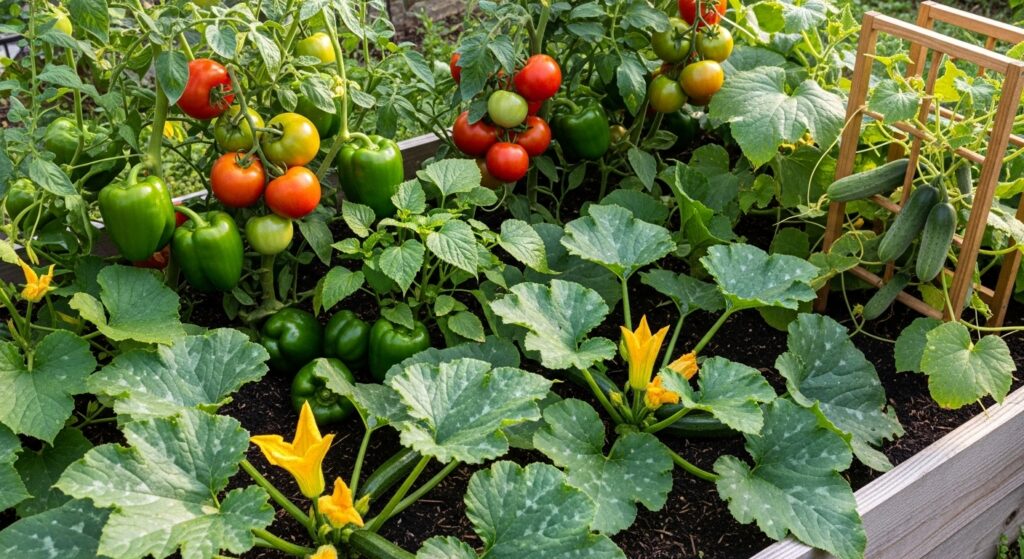
- Tomatoes
- Sunlight: 8+ hours
- Water: Deep watering 2–3 times per week
- Spacing: 18–24 inches apart
- Tip: Pair with basil for natural pest deterrence and better flavor.
- Peppers
- Sunlight: 6–8 hours
- Water: Consistent moisture, but don’t overwater
- Spacing: 12–18 inches apart
- Tip: Peppers love heat—plant in warm soil and consider black mulch to retain heat.
- Cucumbers
- Sunlight: 6–8 hours
- Water: Frequent, especially during fruiting
- Spacing: 12 inches apart, grow on a trellis to save space
- Tip: Pair with radishes to deter cucumber beetles.
- Zucchini
- Sunlight: 6–8 hours
- Water: Regular deep watering
- Spacing: 2–3 feet apart (they spread!)
- Tip: Harvest young for the best flavor and constant production.
Legumes
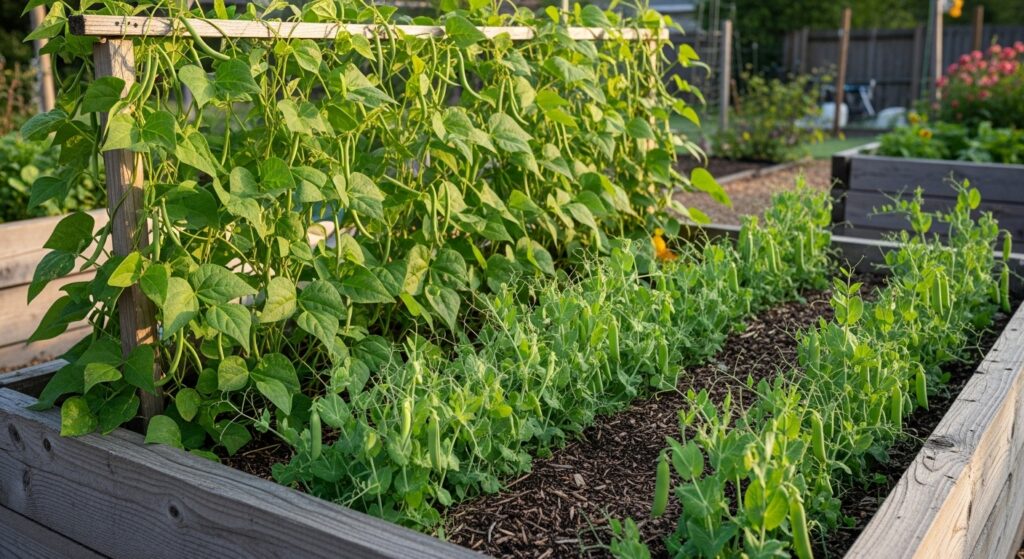
Legumes not only provide fresh food but also improve soil fertility by fixing nitrogen.
- Beans
- Sunlight: 6–8 hours
- Water: Moderate, avoid waterlogging
- Spacing: 4 inches apart for bush beans, 6 inches for pole beans
- Tip: Grow pole beans up a trellis to maximize space.
- Peas
- Sunlight: 4–6 hours
- Water: Steady, light watering
- Spacing: 2 inches apart
- Tip: Perfect cool-season crop—plant early in spring.
Herbs
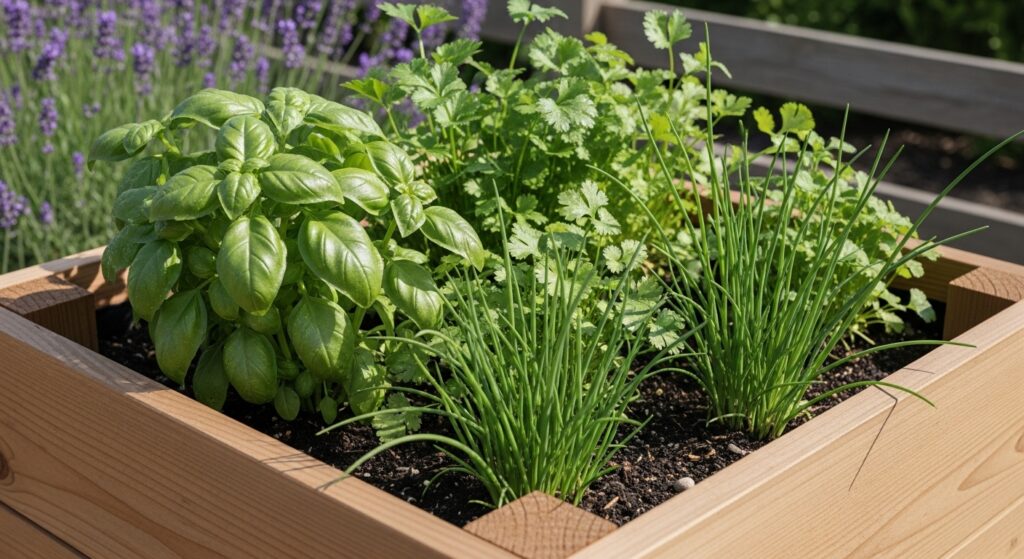
Herbs thrive in raised beds and can be tucked in between larger vegetables.
- Basil: Loves heat, pairs well with tomatoes.
- Parsley: Partial shade tolerant, cut frequently to encourage new growth.
- Cilantro: Best in cooler weather; bolts in summer heat.
- Chives: Hardy perennial, great near carrots to repel pests.
Other Easy Options
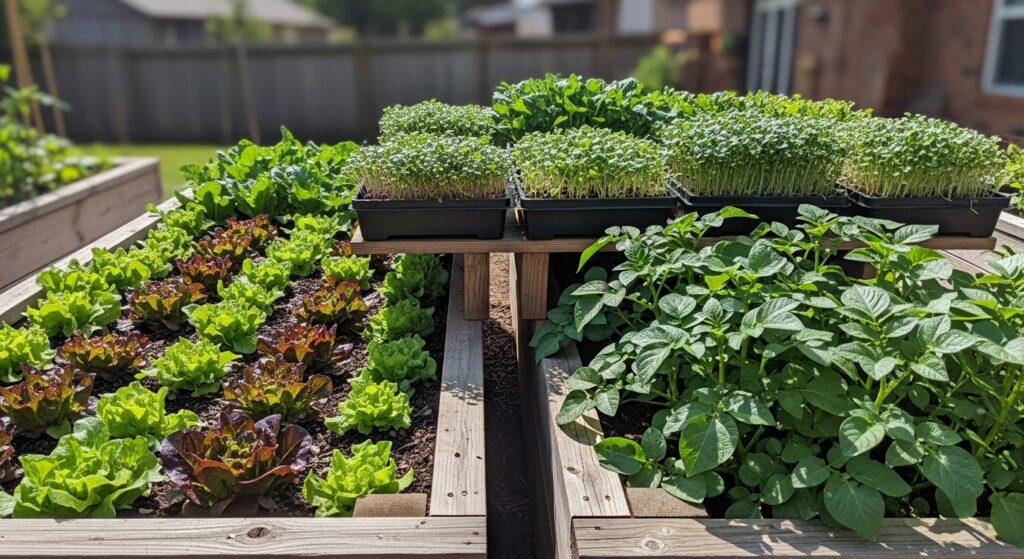
- Potatoes: Need deep beds (12–18 inches). Hill soil around stems as they grow.
- Salad Mixes: Scatter seeds for a cut-and-come-again harvest.
- Microgreens: Quick, nutrient-packed crops harvested in just 2–3 weeks.
How to Arrange Vegetables in Raised Beds
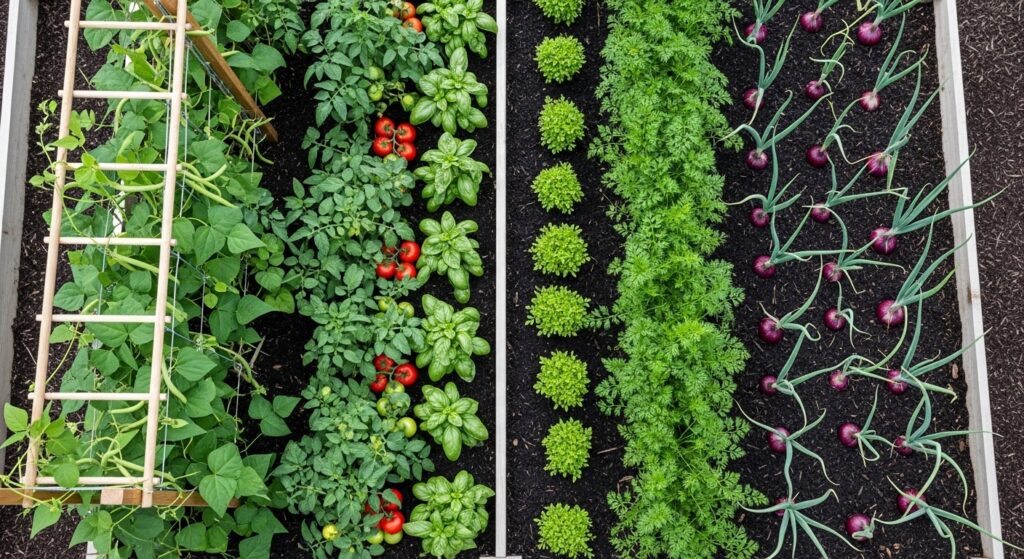
Smart planning makes all the difference. Use these strategies:
- Companion Planting: Tomatoes + basil, carrots + onions, beans + cucumbers.
- Spacing: Avoid overcrowding—check each plant’s mature size.
- Succession Planting: Plant radishes early, then follow with summer crops like peppers.
👉 “For example, tomatoes and basil grow wonderfully together, while carrots and onions make great companions.”
Seasonal Planting Guide
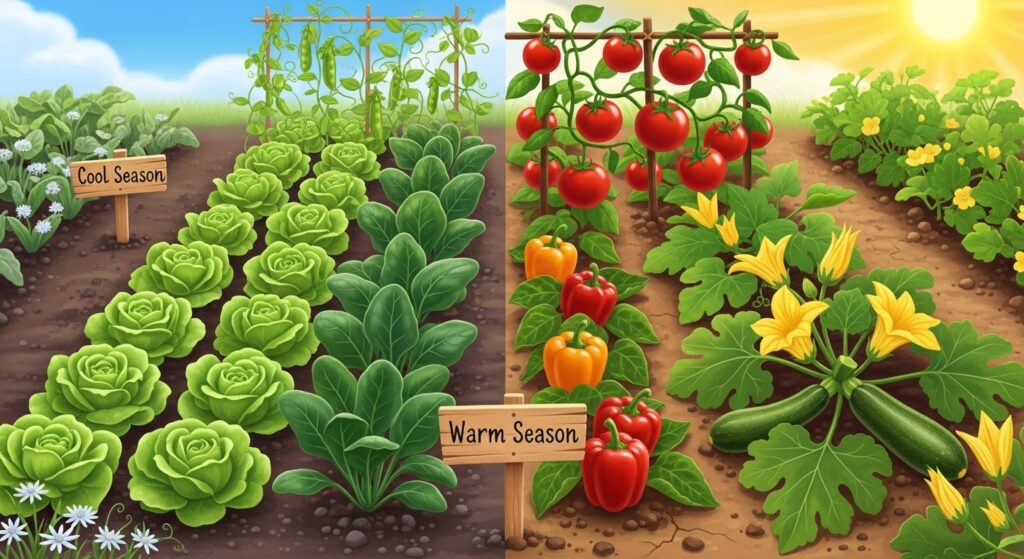
- Cool-Season Crops: Lettuce, spinach, peas, radishes, kale.
- Warm-Season Crops: Tomatoes, peppers, cucumbers, zucchini, basil.
- Tip: Use row covers or cold frames to extend growing seasons.
Soil & Fertilizer Needs for Vegetables
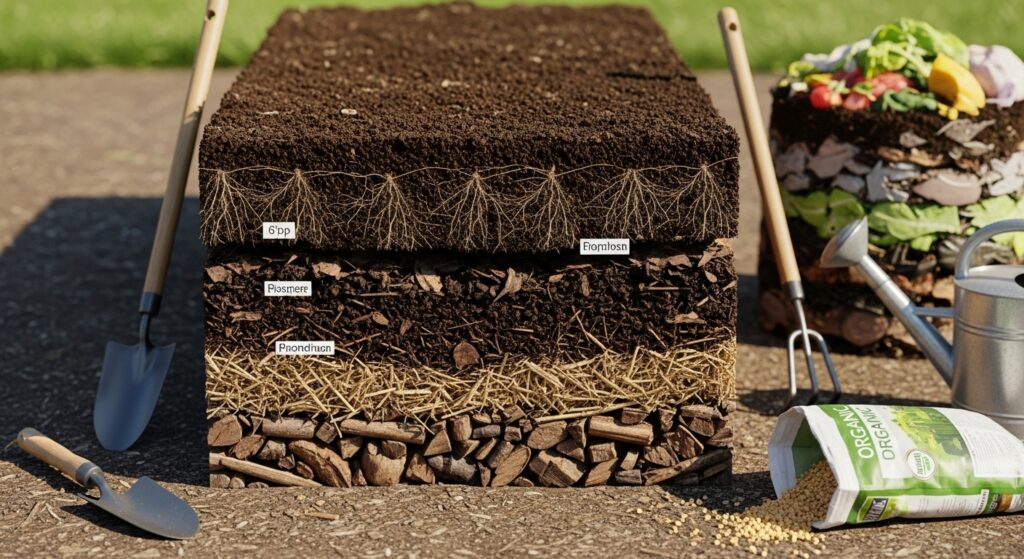
A simple raised bed soil mix:
- 40% topsoil
- 40% compost
- 20% aerating material (perlite, coarse sand, or coconut coir)
Feed with organic fertilizers: compost tea, worm castings, or slow-release granules.
Maintenance Tips
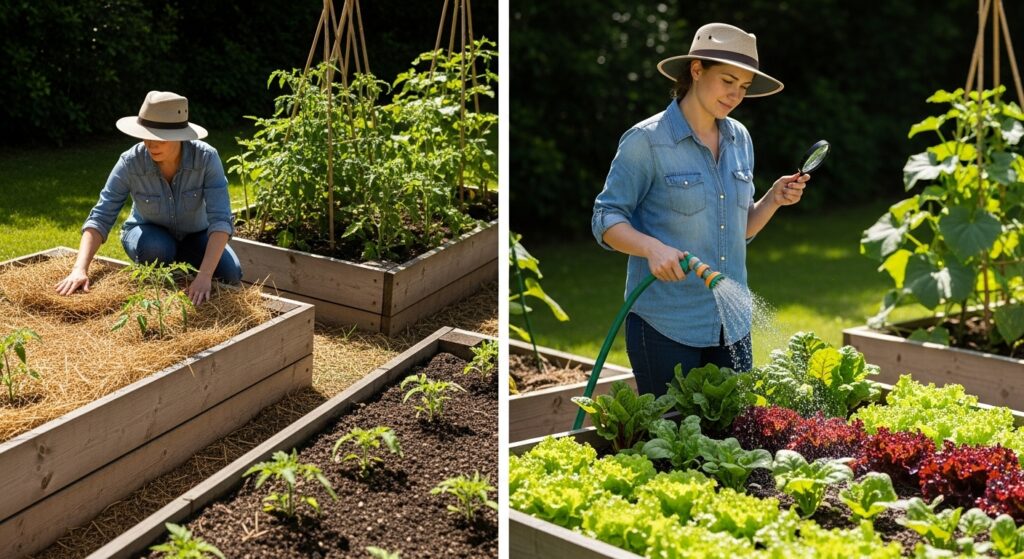
- Watering: Use drip irrigation or water deeply 2–3 times per week.
- Mulching: Add straw or shredded leaves to conserve moisture.
- Crop Rotation: Avoid planting the same family in the same spot each year.
- Pest Prevention: Attract beneficial insects with flowers like marigolds.
Common Mistakes to Avoid
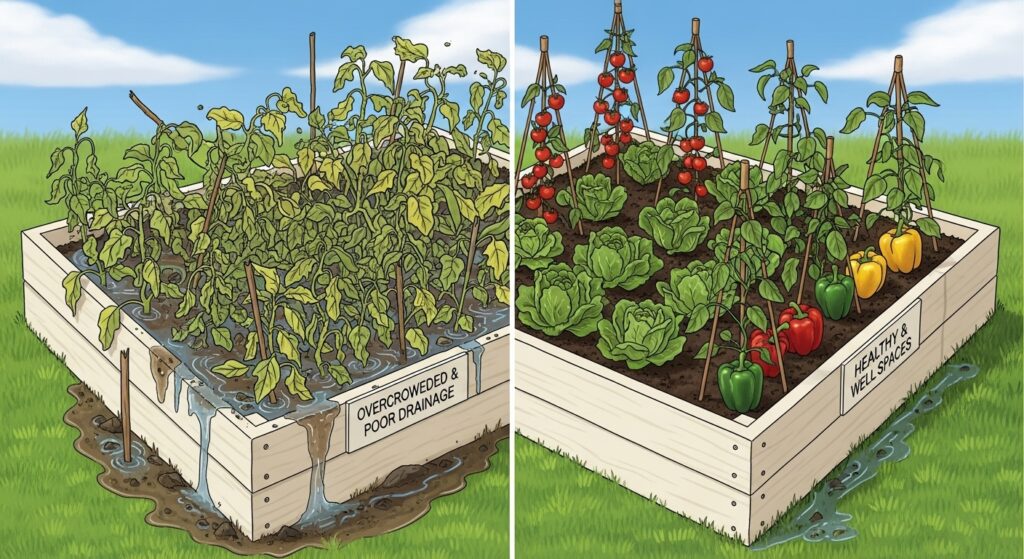
- Overcrowding plants
- Ignoring sunlight needs
- Planting warm-season crops too early
- Poor drainage due to compacted soil
Sample Planting Plans for Beginners
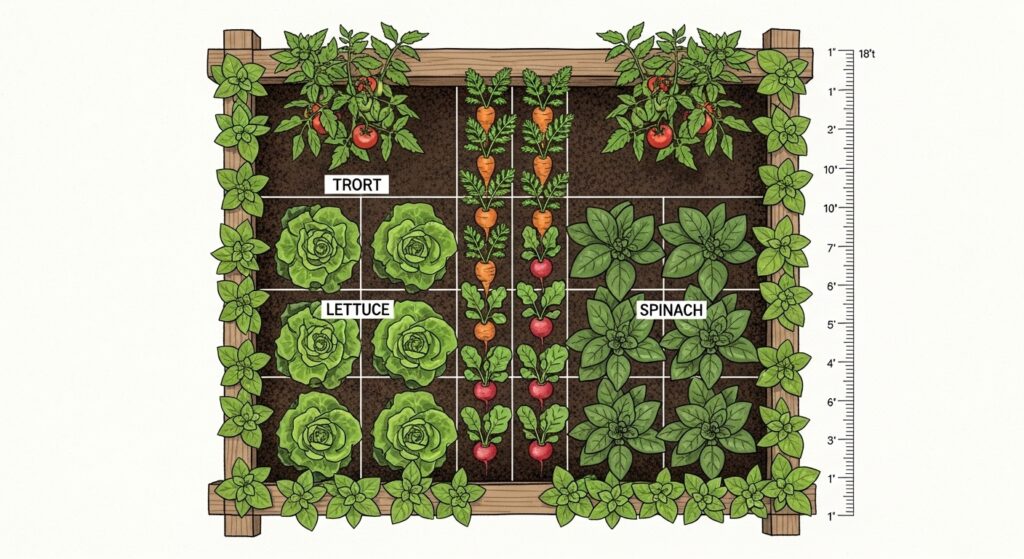
Here’s a simple 4×4 beginner raised bed idea:
- 2 tomato plants (back corners with cages)
- 1 row of lettuce and spinach (front)
- Carrots and radishes are interplanted between rows
- Basil and parsley tucked along the edges
This mix provides salads, cooking herbs, and fresh tomatoes all season.
🌱 FAQ: Best Vegetables for Raised Beds
Conclusion
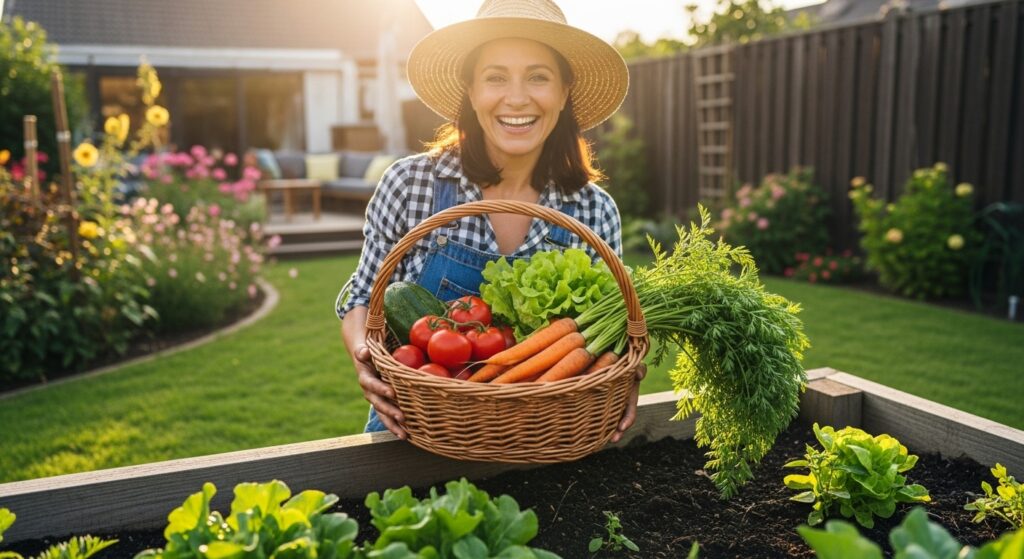
Raised bed vegetable gardening is one of the easiest, most rewarding ways to grow your own food. By starting with the best vegetables for raised beds—like leafy greens, root crops, tomatoes, beans, and herbs—you set yourself up for a season full of success.
Don’t worry about being perfect. Even the most seasoned gardeners learn through trial and error. Start small, plant a few easy vegetables, and enjoy the thrill of harvesting your own homegrown food. With every season, your raised bed will become more productive, and your confidence as a gardener will bloom.
So grab your seeds, roll up your sleeves, and turn that empty raised bed into a thriving, edible oasis. Your first harvest is just a few weeks away!

